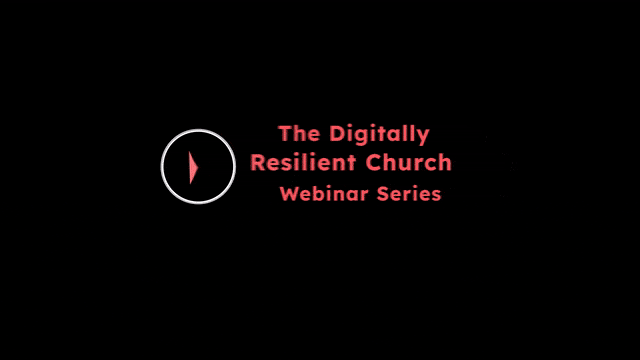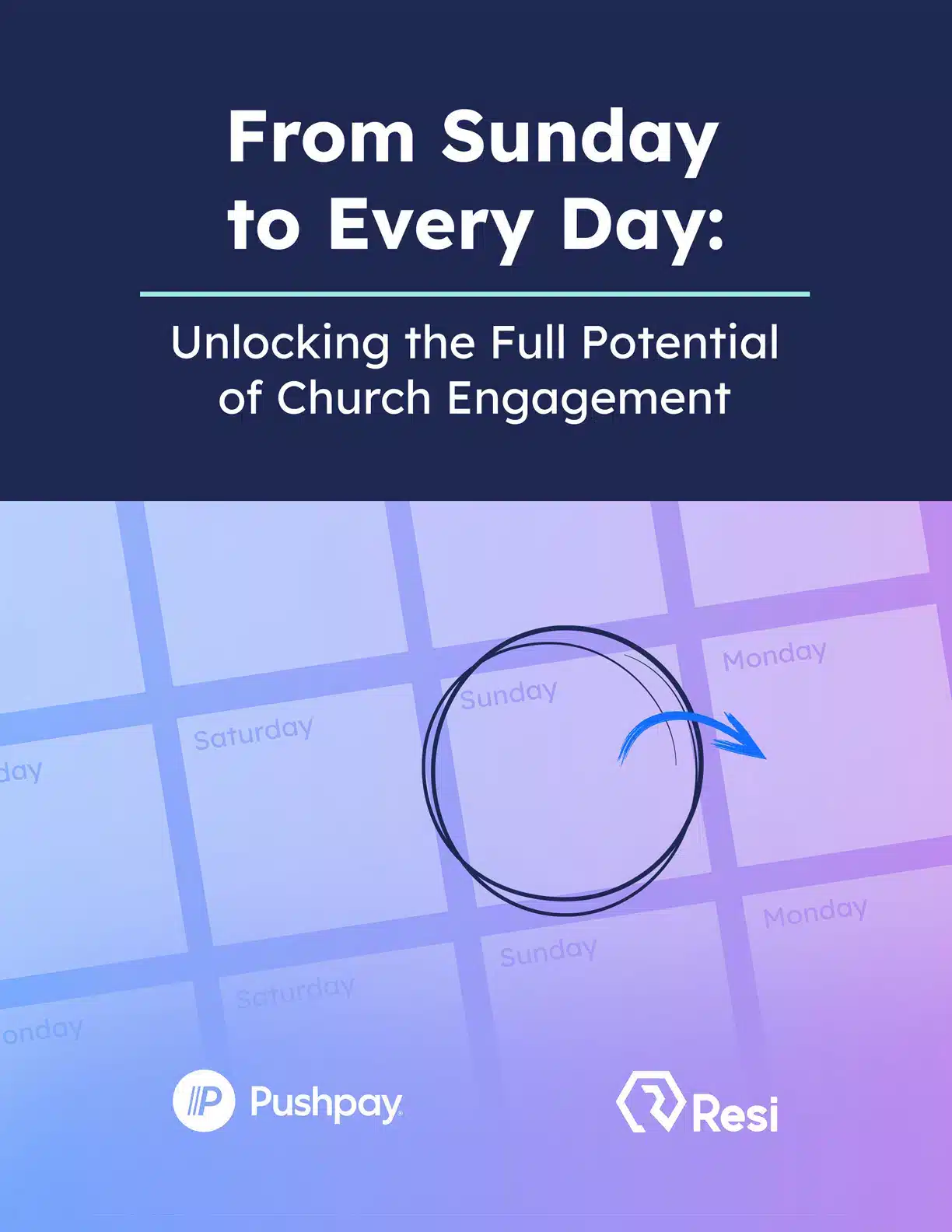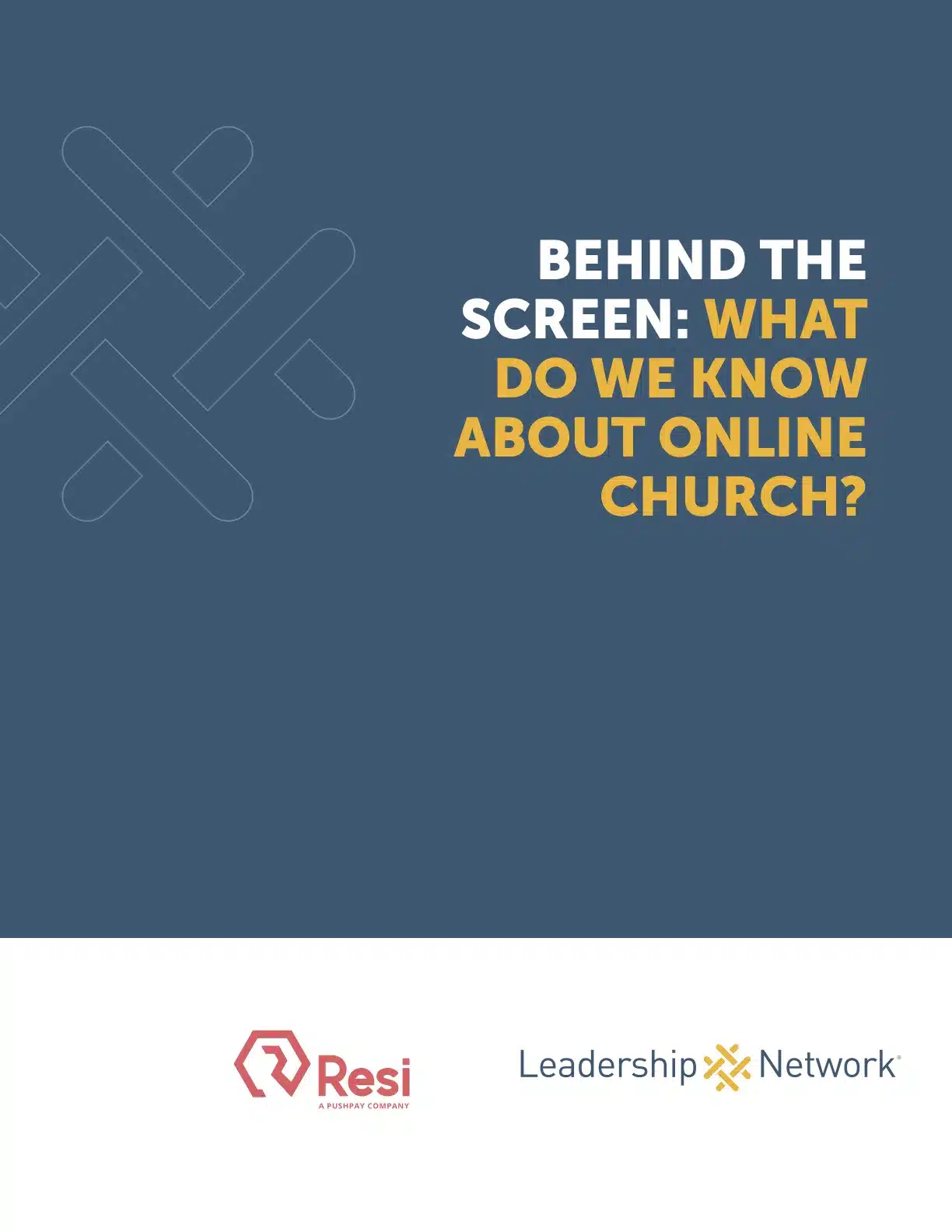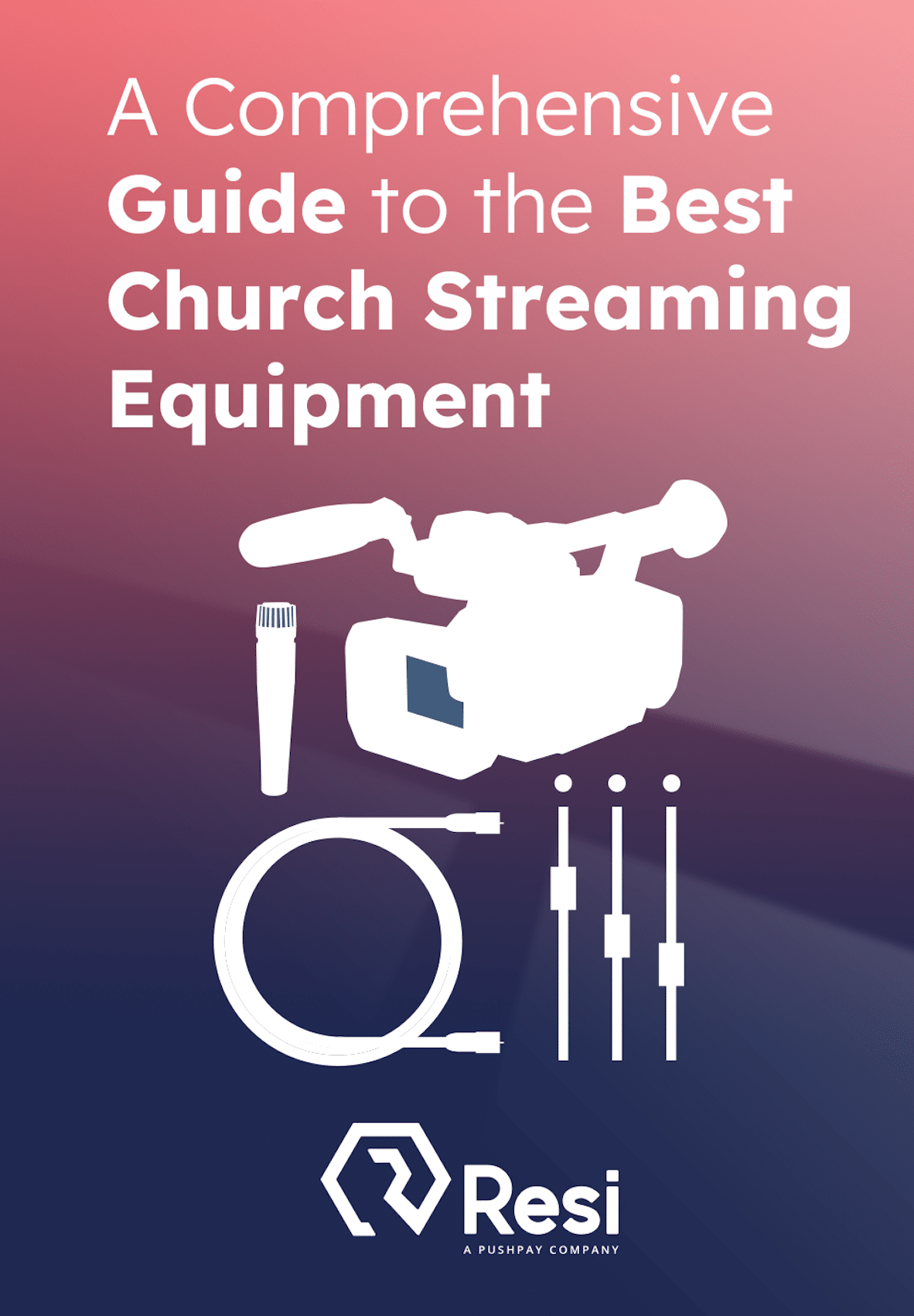
Right before COVID, I became the pastor of a struggling church plant. I was a young leader and watched in horror as my weekly attendance fell to nothing. Meanwhile, I watched our church’s streaming numbers climb sky-high. With no end in sight, I seriously remember thinking, “All of this online church stuff is going to kill my site!”
We all have our own “COVID story,” but mine isn’t what I want to share with you right now. I’d rather talk about how I went from seeing online ministry as an existential threat to an absolute necessity. This journey has challenged how I see the church and my role as a leader within it.
The Digitally Resilient Church Webinar
Featuring Jeff Reed from THECHURCH.DIGITAL, learn to leverage your digital strategy and livestreams for maximum local reach and community impact.
RSVP now
So whether you’re a mainline denomination rooted in history or a non-denominational plant meeting in coffee shops and setting up in middle school cafetoriums (or anything else for that matter), I want you to see there is an incredible opportunity in front of you—not just to get streams but to win hearts. Not just to get likes but to build genuine relationships with people who need what you have—the Gospel.
Every model or expression of the Church has its inherent opportunities and challenges. This is true of your church and mine. It’s true of Catholics and Protestants, mega-churches, and small parishes.
It’s also true of digital ministry. And I think the opportunities for digital discipleship within YOUR church are enormous. Here are 3 reasons why I believe your church needs a strong digital discipleship strategy—and a few examples of how it’s working for us.
Opportunity one: A simple equation: “167 hours > 1 hour.”
Each week has 168 hours. Sunday morning services only give you an hour of people’s attention. That’s not great. And to make it worse, what percentage of your (and your staff’s) hours are spent working on that 1 hour? If you’re like most churches, it’s probably the majority. And how many hours in your schedule are left over for people?
I’m not saying your weekly services and sermons aren’t important. They ARE! But they’ll be exponentially more effective if people are still thinking about them on Monday…and Tuesday…and… you get the idea.
Here are some ideas to help people stay connected for as many of the 168 hours as possible.
Experiment: “Weekend Follow-Up” Groups: We started open groups where people can discuss and reflect on what they heard during the weekend. It’s easy and simple. We recruit a leader, create a handful of questions based on the teaching, and then post them on our website. It’s the lowest barrier to entry group that anyone can join. If someone came to church and liked your message and church enough that they want to come back, then they already have enough information to join a group. It doesn’t have to be as complicated as book study or niche as a hobby or demographic-based group. Anyone who likes your church enough to return has a strong opportunity to connect. We have them in person, and we have them online. We have them in our buildings and as far away as rural Japan. They work.
Opportunity two: A “right-sized” first step.
If you’re going to try out a new restaurant, what do you do first? Odds are, you check it out online. Your age will likely determine whether you check the restaurants’ website, Yelp reviews, Posts on X, Instagram comments, or mentions on TikTok.
But while you can’t try food online (yet), people will “try out” your church before they come in person. And while you need a good website, that’s digital marketing, not digital discipleship.
You have a golden opportunity to offer something of deep value. Give them something free that introduces them to your church’s unique strengths and voice. Donald Miller’s StoryBrand refers to this as a “Transitional Call to Action.” It does three things. First, it establishes you as an authority on a given topic. Second, it puts you in a position to offer something of value generously. Third, it builds trust. In a culture that tends to view Christians as hypocritical and judgmental, don’t these sound like GREAT things to build a relationship?
From Sunday to Every Day
Download our FREE ebook to find out how your church can measure success in this engagement-centric culture.
Download for free!
We churches love to advertise our various groups, studies, and programs, but the reality is that those steps are simply way too big for the average person. They don’t know you. And they don’t know which groups are the “weird ones” with the leader you haven’t figured out how to get rid of yet. (Be honest—you’ve got some weird groups.) There are many opportunities for people to safely “check your church out” in a way where they can do more than read content. They can connect with you and your people. Here’s one example of what this has looked like for us.
Experiment: “Cohorts.” Cohorts are experiments in asynchronous community and growth. They’re like a class, except you can watch the videos whenever you want. They’re like a group, except they don’t meet on any single night of the week. They’re like a book study, except instead of a weekly chapter to read, there are quick daily challenges to complete. And they’re 21 days long, the exact amount of time research shows can help people form new patterns and experience change and momentum in an area of their life.
My wife created our cohorts and designed them around specific “felt needs” that surfaced in research. We lead one investing in marriages, and the results blew us away. We’ve had over 2,000 people do our “21 Days to Build a Marriage You’ll Love” cohort, and it’s been amazing in the first 18 months.
One example is a young couple living only 10 minutes from TWO of our campuses and never attended. They said their marriage was struggling, “and it was either this or counseling, and this was free.” Since then, they’ve started giving, volunteering, attending weekly, attending Rooted, being baptized, and even going on a mission trip.
A digital discipleship tool (like cohorts) was a “right-sized” first step for them. Most of our other offerings of groups and programs were just too big of a leap.
Opportunity three: Unique access.
As we’ve said, every medium and method has unique opportunities and challenges. And I will tell you one of the biggest challenges with your sermons and services. You don’t seem like a real person. You’re on a stage. With lights. And a microphone. (And maybe cameras, hundreds or thousands of seats, and even a fog machine or two for good measure.)
All of this is helpful when you’re teaching. But it can cause real challenges in helping people know you and in helping you know and care for them.
What if there was a way for you to receive questions or feedback from your message without it descending into “open-mic-night-meets-Sunday-morning-chaos?” And what if you could respond to prayer requests personally and directly? And what if the people in your congregation felt like they knew how to pray for you?
Sure, social media, blogs, videos, and other kinds of content can do this in powerful ways. But plenty of people know more and do it better, so I won’t write about this now. But recognize that digital discipleship allows a unique level of access to you, which is pretty much incomparable for you.
Experiment: Daily Scripture reflections.
Three years ago, we started something called the Bible Challenge. It was initially designed to help foster essential biblical literacy within our church, but it has become bigger than that. It has become an inflection point around which so much other stuff has moved. It has become a reminder that scripture wasn’t read individually for most of our faith’s history; it was read corporately.
Every day in our App, our entire community can read the same scripture chapter and reflect and respond to it. It’s not a one-way broadcast; it’s a two-way dialog. You can read your pastor’s thoughts on a passage and hear what’s on his mind that morning. Similarly, the pastor can hear what’s going on in the minds and hearts of the people who sit in the back of the room or watch online from a city across the country or globe. It’s an incredible way for church leaders to connect with a new subset of their church. And it’s a simple way that you can practically say to your community, “Follow me as I follow Christ.”
Behind the Screen: What Do We Know About Online Church?
See our findings about online church and gain important insight into your online audience.
Download for free!
*(Something to note here- Our senior pastor is our MOST consistent voice in this app. He’s done an incredible job fostering a culture of authenticity and vulnerability of sharing when things are good and when they aren’t. It’s a window into his relationship with God, NOT just a series of polished devotionals.)
…And you don’t need a custom app to do this. You could do this with an Instagram feed. You could do it with a Google Doc. There are a thousand different tools that can do this. The hard part is deciding that it’s worth it.
Final Thoughts:
I have about 40 other things I’d like to include, like the beta of a new mentor matching tool, spiritual self-assessments with customized growth recommendations, leveraging articles around SEO keywords, our digital atrium, and more, but I don’t want to risk making this any longer or boring you to tears.
One important note: This is not me bragging. AT ALL. There are WAY smarter people than me (thank God!) on my team and at other churches we are learning from.
Some of our ideas are good, but many are not. The key is to keep trying and learning.
And I want to be clear here. We don’t have a fully baked strategy yet. To my knowledge, no one does! None of what I’ve said is the” A to Z” picture of discipleship. No way! It’s more in the “A to C½” phase. Let’s remember that discipleship plays out over years and decades. Everything I’ve detailed in this article is just onramps that create discipleship opportunities.
We are all beginners and should adopt that mindset. If you’ve read this far, you’ve also likely read dozens of books about the “best” ways to do ministry. The problem is that most of those books are out of date because they don’t tell us the clear path to discipleship in a world that is physical AND digital.
Those books don’t exist because they haven’t been written yet! But who knows, YOU might be the brave one to help chart a course through new territory for generations of followers of Jesus and ministers of God’s good news! YOUR church could unlock new tools and opportunities that could save marriages, bring freedom, heal trauma, initiate justice, introduce people to Jesus, and bring the kingdom of Heaven to earth in new and creative ways.
I hope that regardless of how young or old you are, how tech-savvy or tech-averse you are, you’d take to heart that new generations of people are counting on us to meet them where they are- In the digital AND the physical spaces.







